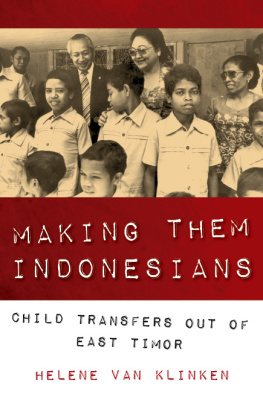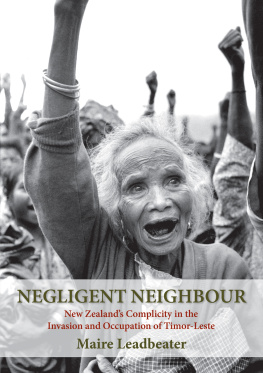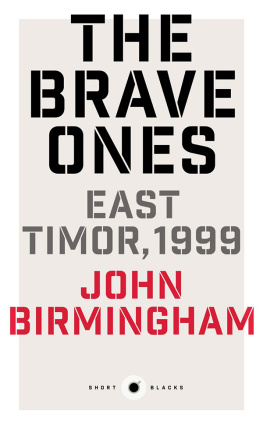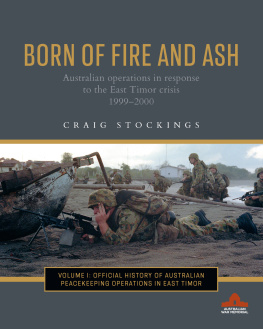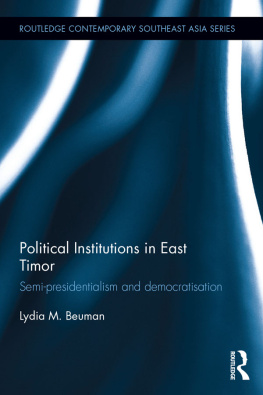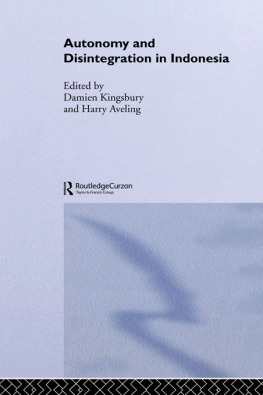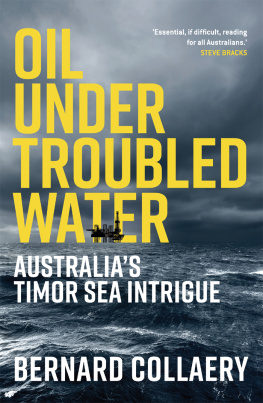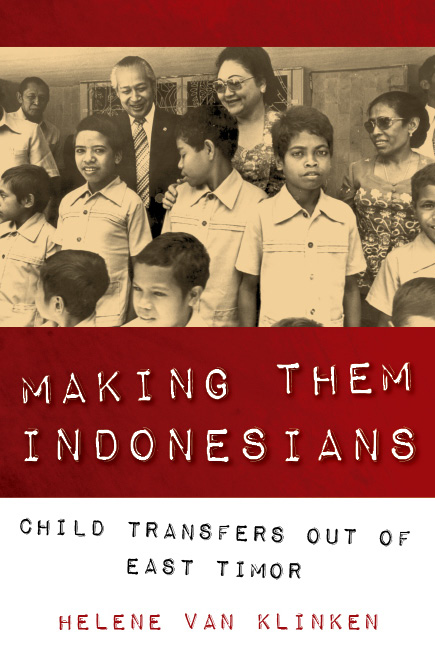Copyright and imprint information
Copyright 2012 Helene van Klinken
The author has made every reasonable effort to locate, contact and acknowledge copyright owners. Any copyright owners who are not properly identified and acknowledged should contact the publisher.
All rights reserved. Apart from any uses permitted by Australias Copyright Act 1968, no part of this book may be reproduced by any process without prior written permission from the copyright owners. Inquiries should be directed to the publisher.
Monash University Publishing
Building 4, Monash University
Clayton, Victoria 3800, Australia
www.publishing.monash.edu
The Monash Asia Series of the Monash Asia Institute replaces Monash Universitys MAI Press imprint. The Monash Asia Series Editorial Board, of the Monash Asia Institute, is chaired by Professor Marika Vicziany.
Monash University Publishing brings to the world publications which advance the best traditions of humane and enlightened thought.
Monash University Publishing titles pass through a rigorous process of independent peer review.
www.publishing.monash.edu/books/mti.html
Design: Les Thomas
Cover image: Kompas, 5 September 1977 . East Timorese children at the home of the Suhartos, 3 September 1977.
National Library of Australia Cataloguing-in-Publication entry:
Author: Klinken, Helene van.
Title: Making them Indonesians : child transfers out of Indonesia.
ISBN: 9781876924805 (pb)
ISBN: 9781876924799 (web)
Notes: Includes index.
Subjects: Forced migration--Timor-Leste; Children and war--Timor-Leste; Children and war--Indonesia; Timor-Leste--History--20th century; Timor-Leste--Politics and government--20th century; Indonesia--Politics and government--20th century.
Foreword
This book tells the story of thousands of East Timorese children who were transferred to Indonesia between 1975 and 1999. A lot is written about the suffering of our people during the war and conflict the displacement, hunger, detention, torture, rape, disappearances, killings. But this story of the transfer of vulnerable children out of East Timor is almost unknown. The children were raised and educated in Indonesia, losing their East Timorese culture and sometimes even the ability to communicate with their own parents and families. Many now live and work in Indonesia and have their own families there. Those who took the children often did so with the best of intentions, but their paternalistic attitudes, including taking many children against the wishes of parents and families, meant that there was little understanding of the personal suffering and the pain that separation causes.
Since the vote for independence in 1999, a number of East Timorese parents have asked me and/or the Alola Foundation of which I am Chair, for help in tracing their missing children in Indonesia. The Alola Foundation, named after a child taken as a war trophy to Indonesia in 1999, has assisted families in their search, and in several instances we have been successful. My husband, Prime Minister Xanana Gusmo, also supports efforts to reunite children taken to Indonesia with their families in East Timor.
This book describes and analyses the child transfers out of East Timor and helps us better to understand why they occurred. The stories here represent the experiences of many East Timorese children and parents, and the book helps to draw public attention to their stories.
There are still many East Timorese living in Indonesia who were taken there as young children. There are also many families and elderly parents in East Timor who long to meet their missing children. I hope that this book, besides giving us a clearer understanding of the transfers, will also help East Timorese who were taken to Indonesia as children to realise that they are not alone in their experience. I hope that they will try to search for their families, and that those who took the children to Indonesia will assist them in their search.
Her Excellency Ms. Kirsty Sword Gusmo
Goodwill Ambassador for Education, Timor-Leste
Chair National Commission, UNESCO Timor-Leste
Chair of the Alola Foundation
-
Cite this chapter as: Sword Gusmo, Kirsty. 2011. 'Foreword'. In Making Them Indonesians: Child Transfers out of East Timor by van Klinken, Helene. Melbourne: Monash University Publishing. Page v.
Copyright 2011
All rights reserved. Apart from any uses permitted by Australias Copyright Act 1968, no part of this book may be reproduced by any process without prior written permission from the copyright owners. Inquiries should be directed to the publisher, Monash University Publishing. Building 4, Monash University, Clayton, Victoria 3800, Australia. www.publishing.monash.edu.
The fact that this book is published online does not mean it is in the public domain.
Contents
Making Them Indonesians:
Child Transfers out of East Timor
Preface
My decision to write about child transfers out of East Timor was influenced by my interest in the stolen generation of Australian Aboriginal children. During my childhood I heard many stories from my mother and her friends about Aboriginal children living in institutions in Australia. However, it took many years before we understood why the children were placed in these institutions.
I first heard stories about children smuggled out of East Timor by soldiers when I was working in Indonesia from 2000 to 2002. This was already after the fall of the New Order regime. More political freedom in Indonesia meant that East Timorese dared to tell their stories. In 2003 I had the opportunity to volunteer at the Commission for Reception, Truth and Reconciliation in East Timor, CAVR. There I began to realise the systematic nature of the transfer of young East Timorese children to Indonesia and to formulate the ideas which led to a PhD thesis and now this book.
There is little awareness of the fact and scale of the transfer of young, dependent East Timorese children to Indonesia. I was struck by the parallels with the removal of Aboriginal children from their families in Australia, a practice which only ceased at the end of the 1960s. If such transfers could continue for so long in Australia, I realised that under the repressive and censored Indonesian New Order regime, from 1965 till the fall of Suharto in 1998, the transfer of young children out of East Timor could also take place unchallenged. As I researched, gradually a picture emerged. I found the power holders in East Timor and Australia transferred children out of similar though not identical political and ideological aims. The Australian authorities wanted to assimilate the Aboriginal children into the dominant, white, Christian society; the aim of the Indonesians was similarly to integrate the East Timorese children, and make them Indonesians.
There was hardly any material written about these child transfers. I have collected the stories from many oral sources. But finding informants was not easy, as those involved have no organised contact with one another. Most of my research took place between 2003 and 2004 in Indonesia and East Timor and I am sincerely grateful to all the people who shared stories and information that made the writing of this book possible. I interviewed 32 parents or relatives of children taken to Indonesia, many of them still looking for their missing children. I spoke with a similar number of East Timorese who had been taken to Indonesia as children. Most have returned to East Timor, although some continue to live in Indonesia. A small number of them are still searching for their families but have no accurate information. Many people generously shared with me information they had about the transfers: East Timorese village and traditional leaders; church and government officials; staff of religious and childcare institutions, staff of non-government organisations in East Timor and Indonesia; former members of the Indonesian military; and pro-Indonesian East Timorese living in Indonesia.

